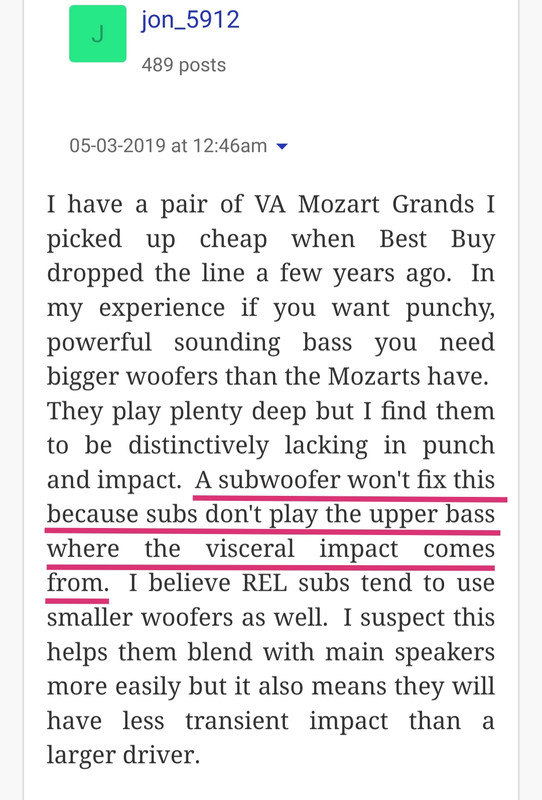I think the issue with subs is its far more complex than it appears:
1) SOURCE MATERIAL has varying bass levels. The deep bass in source material is all over the place, and its not your fault. It's not consistent at all and we find a large variance in quality. Many records, especially old english records have no bass (Genesis, Selling England by the Pound, Kate Bush, etc). Many streaming services strip bass out to prevent clipping within their processors. If you adjusted your sub to sound good on one thing, the next thing will likely be very different. This makes one think its the sub not working correctly when its no such thing.
Conversely, if you set up your sub to sound good on Eminem, very little has that much bass in it. Technically, this is where recording quality has improved dramatically over the years but old recordings or some broadcast mediums roll the bass off tremendously.
So the music you play may determine if you say "my subs don't do anything"..
2) SUB LOCATION in the room is also greatly varied compared to someone else. Since most of us are horrible about setting up subs in room, or we love to use just one-in the dead center between two speakers (the single WORST place) - we get vastly varying results of a given model of sub in the room. Quite often this center position is the null point in the room and the owner never tries a different place because he or she has been told or mistakenly believes "they belong there".
3) Use of HIGH PASS FILTERS in line with mains is very audible, introduces a major phase shift due to the larger physical distance between mains and sub, and almost never sounds good. Using mains full range and subs low passed and then blending to taste is my preferred way, getting the subs as close as possible to the mains, maybe even on the same stand (if you are using sound anchors). I've heard and set up many systems where this technique makes the subs almost 100% undetectable. Not always, but certainly better than HP inline with an expensive speaker I bought for "resolution".
4) The idea of one big sub is not the best way. The best plan is the opposite, multiple small subs set up on multiple different walls at different distances from corners. This is far more likely to yield a smooth response in the room. That's why I like Duke Swarm idea, it works. We use multiple subs in pro studios all the time, it always works better to excite more room modes rather than fewer room modes. Then, one mode doesn't dominate.
5) Use subs somewhere from 125 Hz to 95hz on down works better than trying to get subs to work up higher. It might work in Live sound, but not for home.
6) Make sure you have inverted phase on the sub to see if its better.
7) do not depend on measurement with a low cost or built in system. Those little mics that comes with receivers or lower end preamps are absolutely terrible- they have no bass, they are not accurate below 200Hz 99% of the time.
8) People expect there to be bass in small room. Bass wavelengths are long, and if the frequency's wave is longer than your room dimension guess what, you won't be able to hear it. (32Hz = 38 feet long wave. Anything room dimension shorter than this means you cannot propagate (reproduce) 32Hz in there. 20Hz wave = 54 feet. 10 feet means 60Hz is about the best you can do.
Brad


